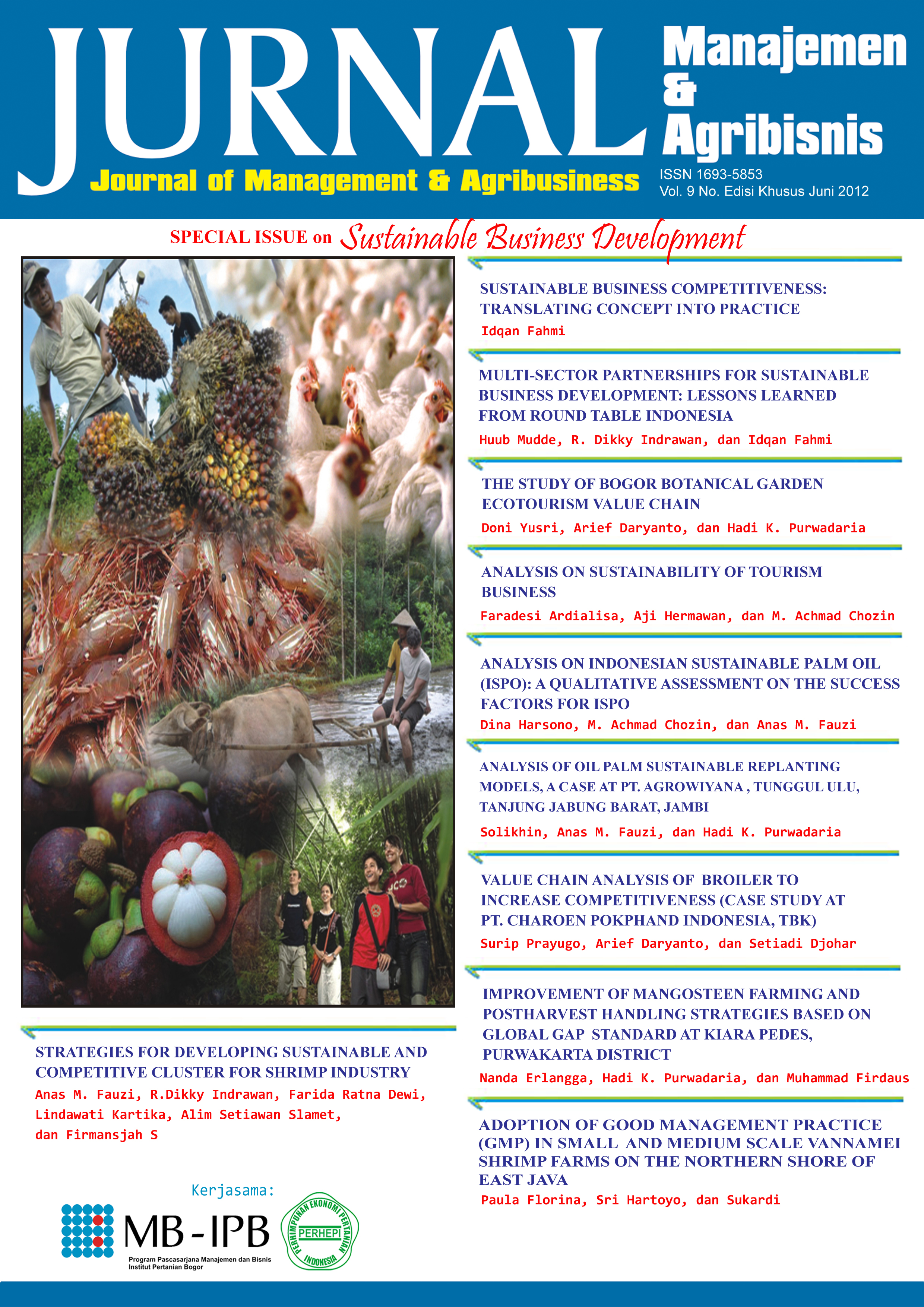VALUE CHAIN ANALYSIS OF BROILER TO INCREASE COMPETITIVENESS (Case Study at PT. Charoen Pokphand Indonesia, Tbk)
Abstract
The objectives of this research are to (1) map the value chain in broiler at PT. Charoen Pokphand Indonesia, Tbk (CPI); (2) analyze the value chain governance in broiler at CPI; (3) analyze the margin of marketing at broiler industry both on farm or off farm; (3) analyze the gap between the expectation and the performance of consumers (farmers) upon using products of CPI and (4) recognize factors influencing competitiveness in broiler industry; and (5) to formulate strategy for value chain upgrading at CPI in order to increase competitiveness of broiler. As revealed by the value chain analysis, the role of CPI in this value chain is highly significant. All poultry inputs (DOC, feed, veterinary medicine, and poultry equipments) are supplied by CPI. As for downstream sector, CPI processes broiler into its derivatives. The type of value chain governance between feed supplier, DOC, and veterinary medicine, poultry equipment, and poultry derivates belongs to market value chain. Whereas the type of value chain governance between carcass supplier and restaurant belongs to captive value chain. Based on the margin of marketing analysis, the party that gains the lowest margin is farmer and the party that receives the highest margin is the processor. In gap analysis, the lowest attribute of competitiveness is the feed spending and the highest attribute is the spending on veterinary medicine for two months. Factors that influence the competitiveness in poultry industry are condition, demand, industry competition, main industries and supporting industries, and government’s role.
Keywords: Value Chain, Competitiveness, Broiler, PT. Charoen Pokphand Indonesia, Tbk, Margin of Marketing Analysis, Gap Analysis, SWOT Analysis
Authors
Authors who publish with this journal agree to the following terms:
- Authors retain copyright and grant the journal right of first publication with the work simultaneously licensed under a Creative Commons Attribution License that allows others to share the work with an acknowledgement of the work's authorship and initial publication in this journal.
- Authors are able to enter into separate, additional contractual arrangements for the non-exclusive distribution of the journal's published version of the work (e.g., post it to an institutional repository or publish it in a book), with an acknowledgement of its initial publication in this journal.
- Authors are permitted and encouraged to post their work online (e.g., in institutional repositories or on their website) prior to and during the submission process, as it can lead to productive exchanges, as well as earlier and greater citation of published work (See The Effect of Open Access).

